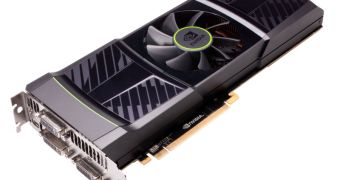One might have learned about rumors and even a certain video of NVIDIA GeForce GTX 590 dual-GPU cards burning, but it looks like the problem really might not be on NVIDIA's hands after all.
The GeForce GTX 590 graphics adapter has definitely stirred quite a varied set of reactions ever since it was officially introduced.
One of them came from an unlikely source, namely reports that some of the cards actually caught fire (exploded, if one were to be dramatic).
Initially, the Santa Clara, California-based company said the issue was because of the voltage settings and an old driver.
Unfortunately, when it started to look like the issue may be more widespread, rumors arose about a possible new BIOS.
This had the unfortunate effect of actually fueling the idea that it was NVIDIA's slip up that caused the fiery events and that more, or even all, dual-chip cards might suffer a similar fate sooner or later.
Now, it is reported that NVIDIA stepped in and said that it had no designs to change the BIOS, since there were no problems with it.
Basically, the cards that suffered the flaming death are suspected of having done so because, at least in ASUS's case, the BIOS had been modified to allow for voltage of 1.2 V, overworking the card with a TDP of up to 550 W.
The new driver should now prevent the product from ever drawing so much power, regardless of what its BIOS says.
"NVIDIA's reference GTX 590 VBIOS on the production boards has not changed, and we have not provided a new VBIOS to AICs or end users for GTX 590. The original GTX 590 VBIOS that NVIDIA shipped is good for customers to use and we stand fully behind the reliability of the hardware with that VBIOS,” NVIDIA supposedly said.
“We did hear of one AIC partner who issued a custom VBIOS update specific to their board and we are checking in with them on the details of this."

 14 DAY TRIAL //
14 DAY TRIAL //